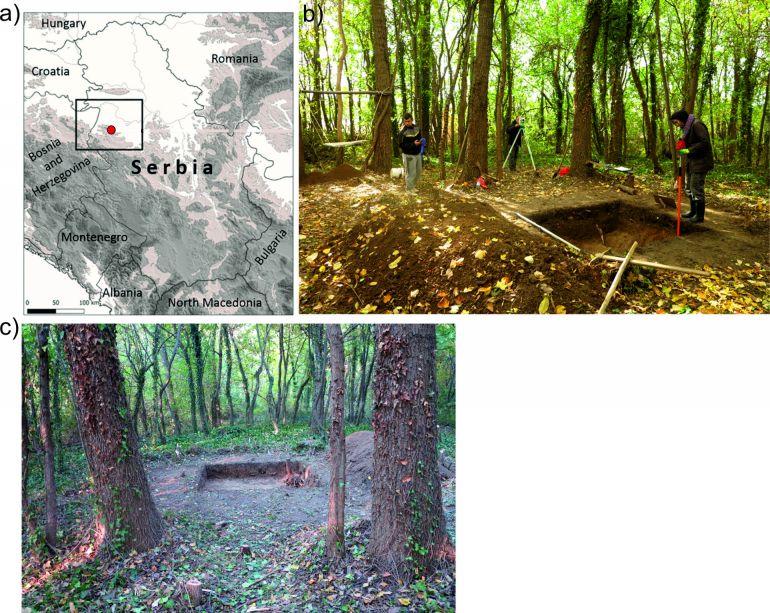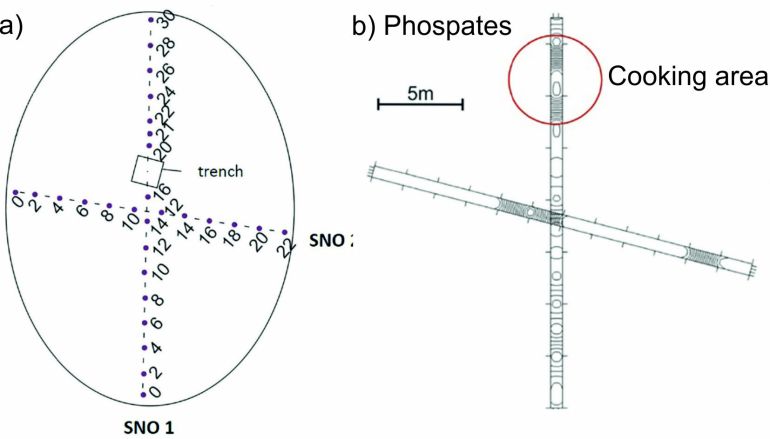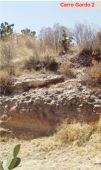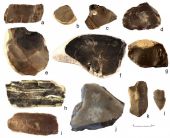The Spotlight #5
Posted by Francesca Ferrario in ECR News on 14 Mar 2022
The March 2022 release of “The Spotlight” highlights the paper by Gorica Veselinović and co-authors, entitled “Reconstruction of palaeoenvironment and ancient human activities at Obrovac-type settlements (Serbia) using a geochemical approach”. The paper is available here.
The research
The paper presents the results of investigations performed on Obrovac-type archaeological sites, dated to ca- 5th millennium BC, in W Serbia (Fig. 1). Organic-geochemical analyses of paleosols allowed to reconstruct the paleo-environment and the imprints of human activities (use of space and activity zones).
So, what’s an Obrovac-type site? They are small mound-like sites, usually less than 50 m in diameter, enclosed by a wide ditch; they are peculiar in the sense that can be found in the study region, but not in other parts of the Balkans.

Figure 1: a) red dot is the location of the study site in W Serbia; b-c) photographs of the studied site. The photos were taken as part of the Project: “Living in the wetland”.
The amount and distribution of biomarkers and n-alkanes tell us information on sources of organic matter, environmental conditions and biodegradation processes: such data were used to reconstruct the vegetal landscape during the Late Neolithic / Early Eneolithic. Additionally, organic carbon content and anion analyses were used to reconstruct the activity zones at a high resolution on a total of 58 samples, providing a glimpse on the lifestyle within the settlement (Fig. 2). The high concentration of sulphates and phosphates in the N part of the profile is indicative of a cluster of organic matter. The high phosphate content tentatively suggests that this spot may be the place where food was stored and cooked.

Figure 2: a) location of the samples at Šanac at Obrva; b) spatial distribution and concentration of phosphates.
Why should we care?
Knowledge gaps still exists on the origin and function of Obrovac-type sites, for instance concerning their seasonal or permanent occupation. The study presented in this paper is the first organic-geochemical approach on such sites and shed a new light on the structure and organization of the settlements, together with an overview of the natural environment during human occupation. The obtained results point to a spatial organization of the settlement much more complex than previously thought.
The Author
Dr. Gorica Veselinović, Assistant Research Professor at University of Belgrade, Institute of chemistry, technology and metallurgy (IChTM) – National institute of the Republic of Serbia. 2017: PhD in Chemistry, University of Belgrade – Faculty of Chemistry. Research interest: Environmental chemistry and Geochemistry – Geochemical characterization of different types of substrates, such as sediment, soil, mud, etc. Biomarker analysis in archaeological layers and artifacts; Organic and inorganic pollutants in environment, UV filters as an emergent group of persistent organic pollutants, environmental fate of pollutants when they reach the water bodies, transformation products, evaluation of eco-toxic potential of certain compounds
Contacts: email address gorica.veselinovicATihtm.bg.acDOTrs, gorica.grbovicATgmailDOTcom, ResearchGate page



